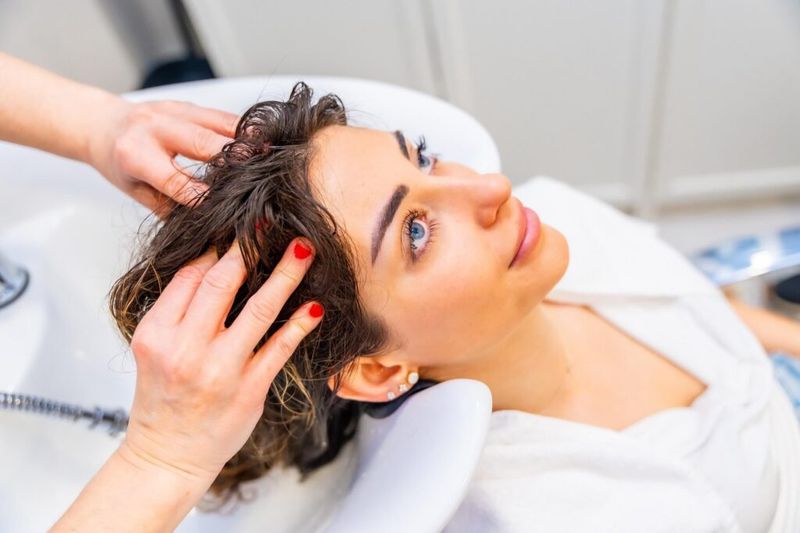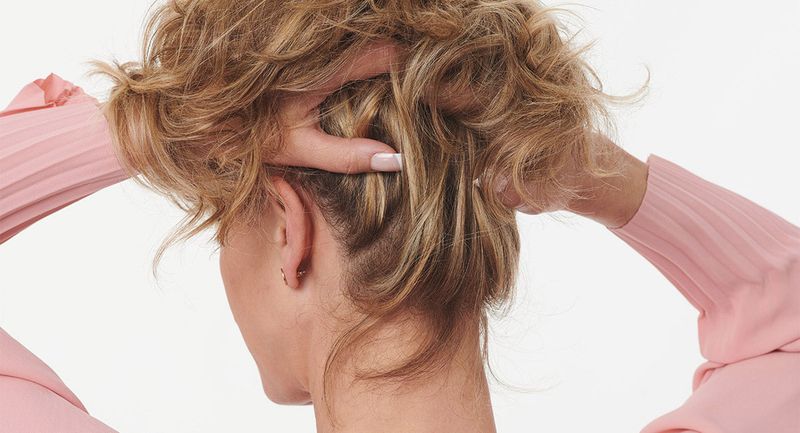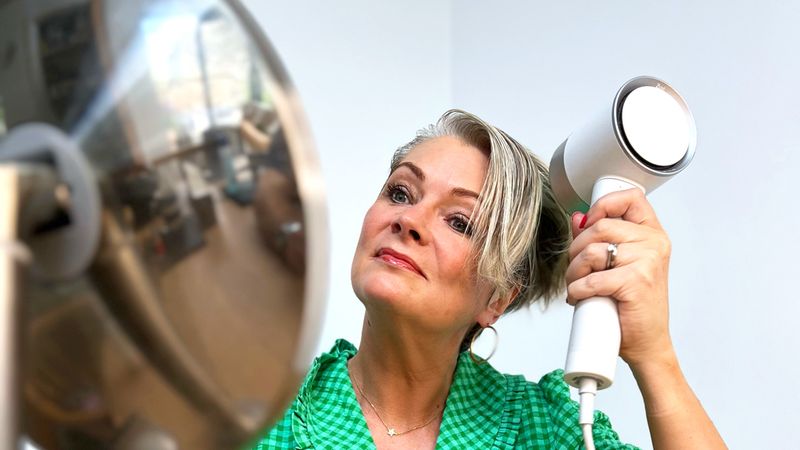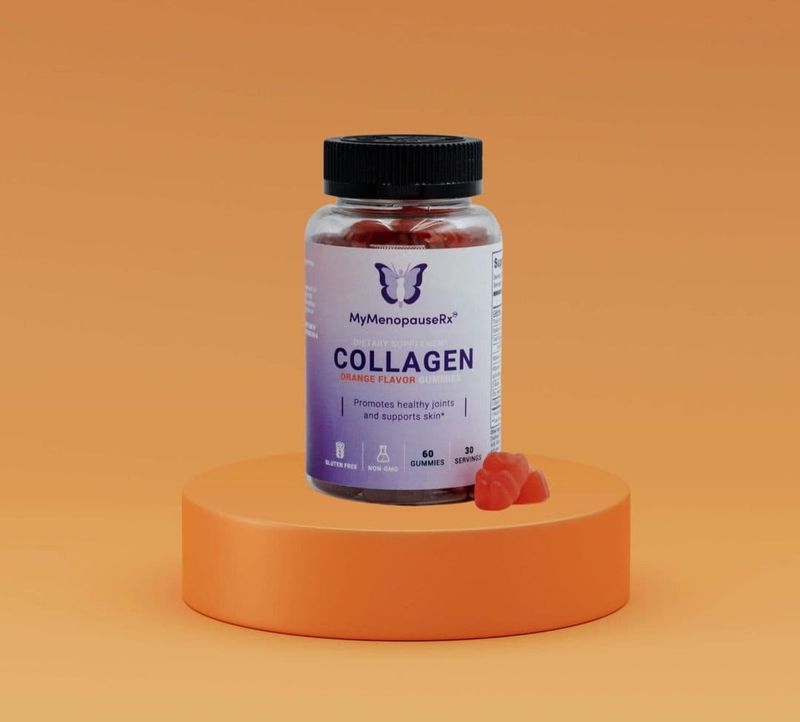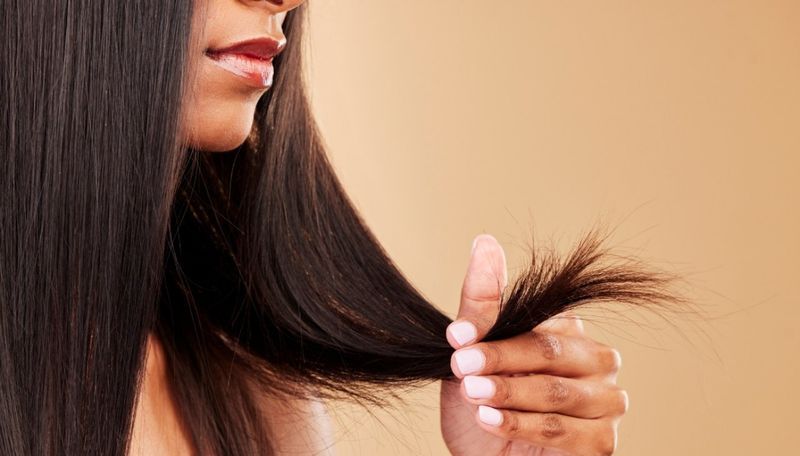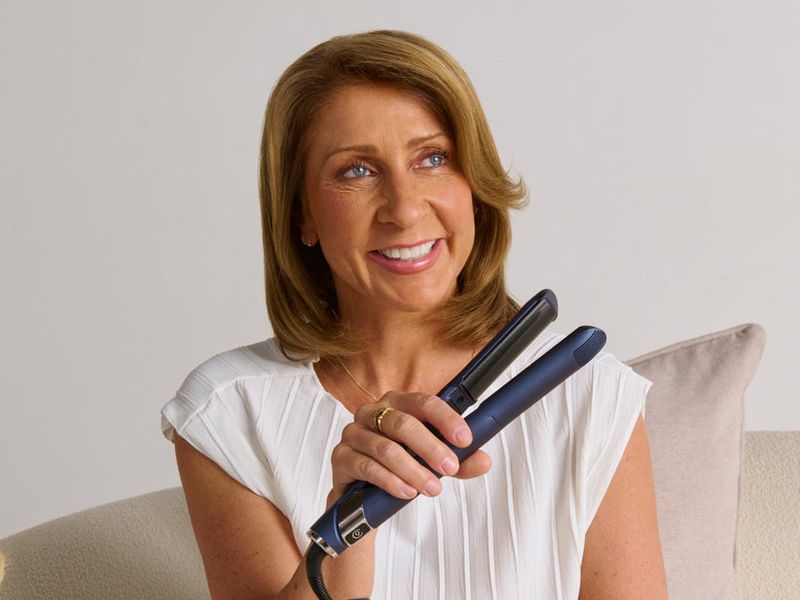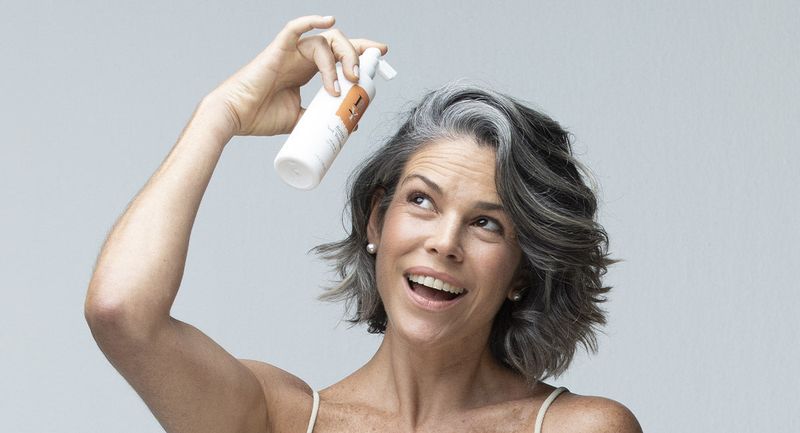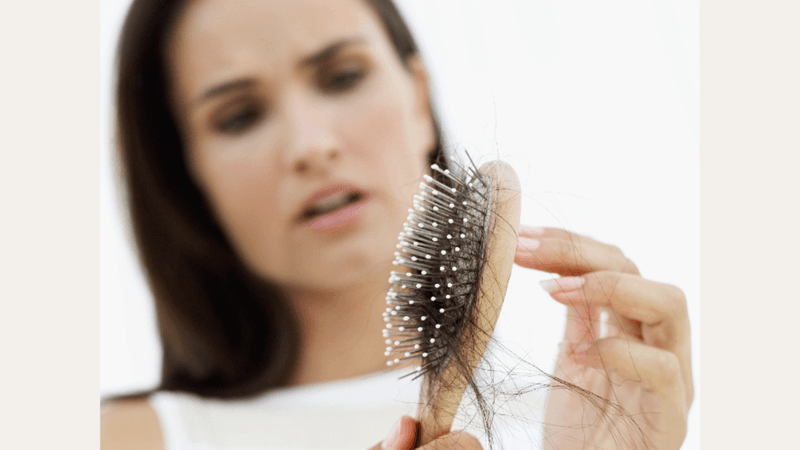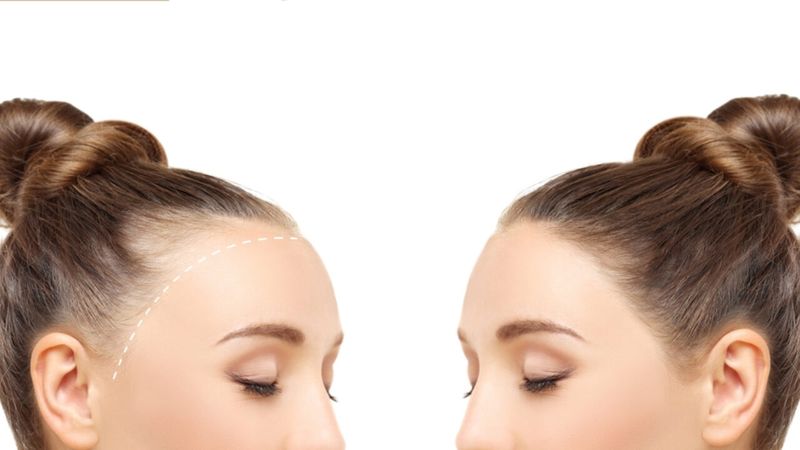Hormonal changes during perimenopause can turn your once-predictable hair into a complete mystery. Many women notice thinning, dryness, or even changes in texture as estrogen levels fluctuate. Don’t panic! Understanding how hormones affect your hair is the first step to managing these changes and keeping your locks healthy through this transition and beyond.
1. Embrace Scalp Care
Your scalp needs extra attention during hormonal shifts. Decreased estrogen can lead to a drier, itchier scalp that produces less natural oil. This new environment affects how your hair grows from the follicle.
Try a weekly scalp massage with warm oil (jojoba works wonders) to stimulate blood flow and distribute natural oils. Leave it on for 20 minutes before shampooing. For persistent dryness, specialized scalp serums containing hyaluronic acid provide much-needed moisture without weighing hair down.
Related: -7 Straight-Hair Problems No One Talks About And 8 Easy Fixes That Shine
Many women report seeing improvement within a month of regular scalp treatments. Remember, healthy hair starts at the root!
2. Switch to Sulfate-Free Shampoos
Harsh detergents strip away the precious oils your aging hair desperately needs. Perimenopausal hair becomes increasingly fragile and dry as hormone levels change, making aggressive cleansing formulas your worst enemy.
Look for gentle, sulfate-free shampoos containing moisturizing ingredients like argan oil, shea butter, or glycerin. Many women find washing less frequently—every 2-3 days instead of daily—helps maintain natural moisture balance.
Fun fact: Your scalp actually recalibrates oil production when you wash less frequently! Start by adding just one extra day between washes and see how your hair responds.
3. Protein Treatments for Strength
Hormonal fluctuations weaken hair’s protein structure, leaving strands more vulnerable to breakage. Monthly protein treatments restore strength by filling in damaged areas of the hair shaft. The difference can be remarkable after just one application.
At-home keratin masks work wonders for many women experiencing perimenopause-related hair changes. Apply to damp hair, focusing on mid-lengths to ends where damage is most visible. Leave on for the recommended time—never longer, as too much protein can make hair brittle.
Balance is key! Alternate between protein and moisturizing treatments to maintain the optimal strength-hydration ratio your changing hair needs.
4. Rethink Your Heat Styling Habits
That flat iron you’ve used for years? It’s time to give it a break. Hormonal hair is significantly more vulnerable to heat damage, with thinner strands that literally cook faster under high temperatures.
Lower your styling tools to the minimum effective temperature—usually around 300°F instead of the standard 400°F. Invest in a good heat protectant spray that forms a legitimate barrier between your hair and hot tools. Silk proteins and argan oil formulations offer excellent protection.
Consider embracing your natural texture two or three days a week. Many women discover that working with, rather than against, their changing hair texture results in surprisingly flattering styles with minimal effort.
5. Collagen Supplements for Inner Support
Hair follicles love collagen. As your body’s natural production declines during perimenopause, supplementation can help maintain hair thickness and growth cycles. Marine collagen, in particular, contains amino acids that support keratin structure—the protein that forms your hair.
Start with 10 grams daily, mixed into your morning coffee or smoothie where you’ll barely notice it. Consistency matters more than dosage; your body needs regular supply to utilize it effectively for hair growth.
Bonus: The same collagen supporting your hair also benefits skin elasticity and joint health—addressing multiple menopausal concerns with one supplement. Most women report noticing improvements after 2-3 months of daily use.
6. Biotin-Rich Foods for Growth
Your fork can be a powerful tool for healthier hair. Biotin deficiency often shows up first as thinning hair, and many perimenopausal women don’t get enough of this crucial B vitamin. Eggs, especially the yolks, deliver a concentrated dose of biotin along with other hair-supporting nutrients.
Sweet potatoes contain beta-carotene that converts to vitamin A, regulating sebum production in your changing scalp. Salmon provides omega-3 fatty acids that nourish follicles from within, while nuts and seeds offer zinc and vitamin E that protect against oxidative stress.
Just two biotin-rich meals weekly can make a noticeable difference in new hair growth quality. Your hair literally grows from what you eat!
7. Hormone-Balancing Haircare Ingredients
Certain botanical ingredients work specifically to counteract hormone-related hair changes. Saw palmetto extract blocks DHT, the hormone derivative that shrinks hair follicles during perimenopause. Look for it in shampoos and leave-in treatments for regular exposure.
Pumpkin seed oil contains phytosterols that naturally balance hormone levels affecting your scalp. Many women notice less shedding after incorporating it into their routine. Rosemary extract stimulates circulation while countering testosterone’s effects on hair follicles—a double win for thinning areas.
These ingredients work gradually, with most women seeing results after 8-12 weeks of consistent use. Their effects are cumulative, so patience pays off!
8. Strategic Haircuts for Fullness
The right cut can instantly transform thinning hair into a fuller-looking style. Blunt cuts create the illusion of thickness by forming a solid hair line rather than wispy ends. Many women find that taking length up to shoulder-level or shorter maximizes volume during perimenopause.
Internal layers (not visible from the outside) provide lift at the crown where hormonal thinning often becomes noticeable first. Avoid razor-cutting techniques that can make ends appear even thinner. Instead, request point-cutting for a softer edge that still maintains fullness.
Bring reference photos showing the volume you want rather than just the style. A skilled stylist can adapt trendy cuts to work specifically with your changing hair texture and density.
9. Gentle Nighttime Routines
Night sweats and tossing can wreak havoc on perimenopausal hair. Switching to a silk or satin pillowcase reduces friction that causes breakage and frizz. The smooth surface allows hair to glide rather than catch and pull during sleep movements.
Avoid tight ponytails or buns that stress already-fragile strands. Instead, try a loose braid or twist secured with silk scrunchies to prevent dents while maintaining some control. Many women find this simple change dramatically reduces morning breakage and tangling.
Applying a pea-sized amount of lightweight oil to ends before bed provides overnight moisture without weighing hair down. Jojoba most closely mimics your scalp’s natural sebum, making it ideal for this purpose.
10. Root Cover-Up Strategies
Gray roots seem to appear faster during perimenopause—and they’re not your imagination! Hormonal changes can accelerate the graying process while simultaneously making hair more resistant to color. Talk about unfair!
Root powders and sprays offer quick fixes between colorings without the harsh chemicals. They adhere better to perimenopausal hair when applied to completely dry, oil-free roots. For resistant grays, try a specialized root concealer crayon that deposits more pigment exactly where needed.
Many women find switching to demi-permanent color during perimenopause provides better gray coverage with less damage than permanent dyes. The gentler formulation penetrates just enough to blend grays rather than completely covering them.
11. Scalp-Stimulating Massage Techniques
Blood flow feeds your follicles, and nothing boosts circulation like regular massage. Spending just two minutes daily stimulating your scalp can make a noticeable difference in hair growth quality during hormonal transitions.
Use fingertips (not nails) to make small, circular motions across your entire scalp, focusing extra attention on thinning areas. Morning massages energize follicles for the day ahead, while evening sessions help distribute natural oils down the hair shaft for overnight conditioning.
For enhanced benefits, try alternating pressure—30 seconds of firm massage followed by 30 seconds of gentle touch. This pressure variation creates a pumping action that maximizes blood delivery to hungry hair follicles.
12. Volumizing Product Strategies
Not all volumizing products work for hormonally-changing hair. Many traditional formulas contain alcohol that further dries already-parched strands. Look instead for water-based volumizers containing panthenol or rice protein that plump hair from within.
Application technique matters tremendously. Spray volumizers directly at the roots from about 8 inches away, then use fingertips to lift and separate while blow-drying. Many women find that applying products to the underside of hair rather than the top layer creates more natural-looking volume.
Layer products strategically—a volumizing spray at the roots, followed by a lightweight mousse through mid-lengths can double your results without the dreaded crunchiness or heaviness that makes thinning hair look worse.
13. Stress Management for Less Shedding
Cortisol—the stress hormone—directly impacts your hair growth cycle. During perimenopause, when hormones are already fluctuating, additional stress can trigger excessive shedding. Your body essentially redirects energy away from “non-essential” functions like hair growth during stressful periods.
Regular meditation or deep breathing activates your parasympathetic nervous system, counteracting the cortisol surge that contributes to hair loss. Even five minutes daily makes a measurable difference in stress hormone levels.
Physical activity—particularly yoga and swimming—reduces cortisol while improving circulation to your scalp. Many women notice significantly less hair in the drain after establishing a consistent stress management routine for just three weeks.
14. Consider Hair-Friendly HRT Options
Not all hormone replacement therapies affect hair the same way. Some synthetic progestins can actually trigger or worsen hair loss in susceptible women. If you’re considering HRT, discuss hair-friendly options with your healthcare provider.
Bioidentical estradiol often supports hair growth while addressing other menopausal symptoms. Compounded formulations can be tailored to your specific hormone levels and needs. Many women report improved hair density within 3-6 months of starting appropriate hormone therapy.
Topical hormones applied directly to the scalp show promising results for some women without systemic effects. These specialized treatments require prescription and should be monitored by a provider experienced in treating hormonal hair changes.
15. Embrace Low-Manipulation Styling
Every brush stroke, hair tie, and styling session stresses your already-vulnerable strands. Minimalist hair routines preserve length and prevent breakage during hormonal transitions. Many women find that halving their styling frequency dramatically improves hair health within weeks.
Opt for loose styles secured with fabric-covered elastics or claw clips rather than tight ponytails. When brushing, start at the ends and work upward in short, gentle strokes instead of pulling from root to tip. A wide-tooth wooden comb causes less static and breakage than plastic or metal tools.
Consider wash-and-wear cuts that work with your natural texture rather than against it. The best styles require minimal daily manipulation while still looking intentional and polished.


